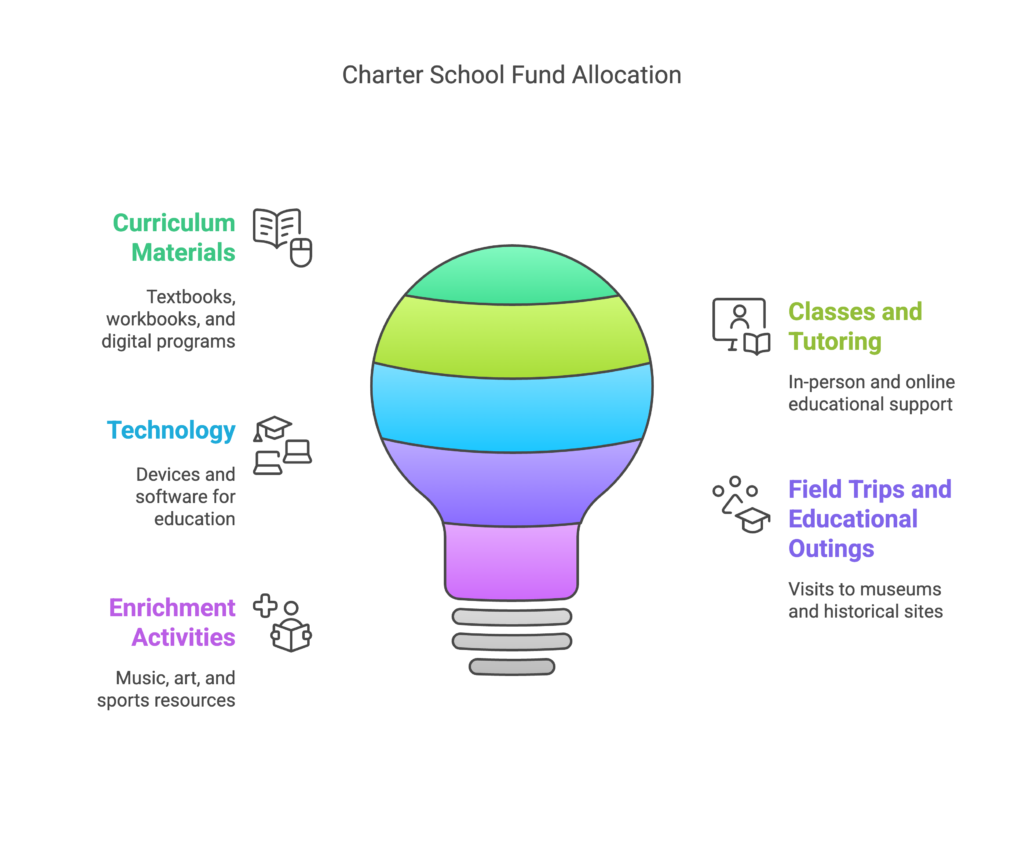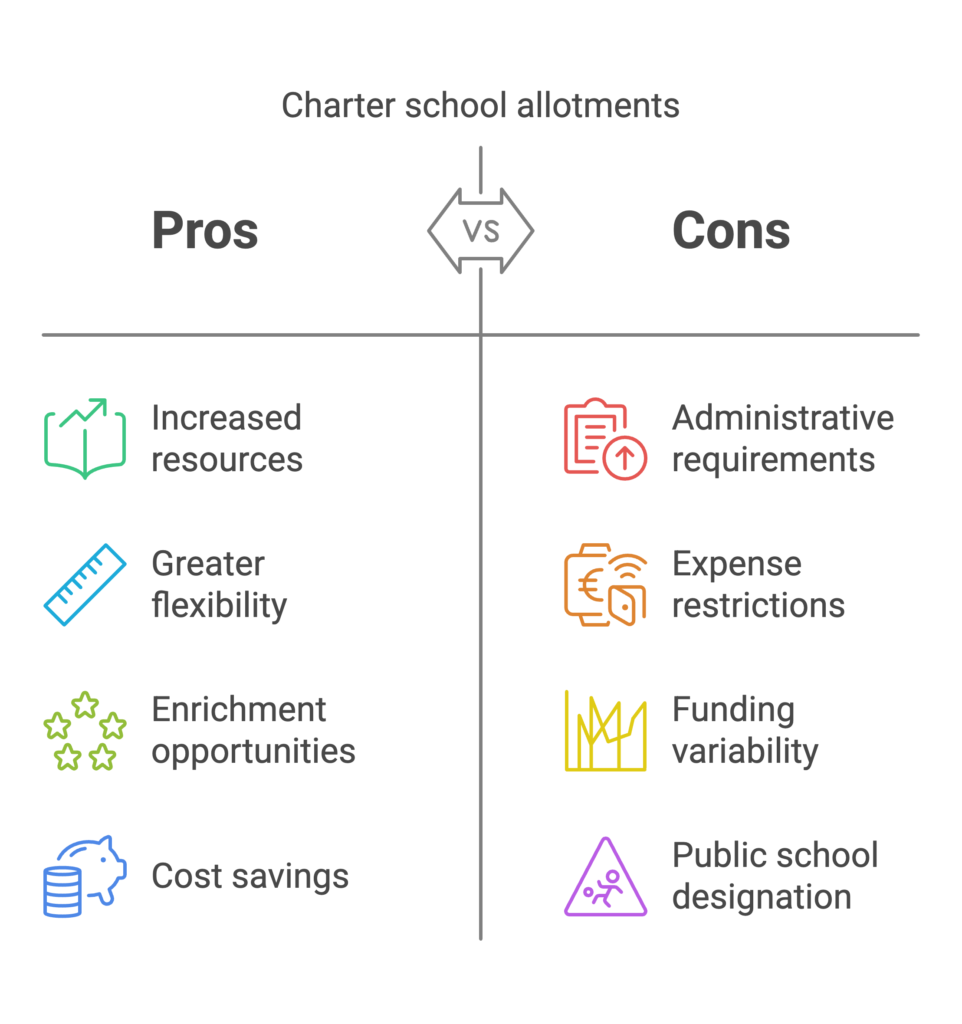Navigating Charter School Allotments in California
Hey Learn Grid community! It’s Corey and Lissa Engstrom here, and we’re excited to delve into a topic that’s been a real asset for many homeschooling families in California: charter school allotments. We’ve witnessed firsthand how these funds can unlock a wealth of educational opportunities, and we’re here to guide you through understanding and utilizing this valuable resource.
Let’s begin by recognizing the remarkable growth of homeschooling. It’s clear that families are increasingly seeking personalized, flexible, and tailored educational experiences for their children. In California, this trend is particularly strong, with homeschool enrollment experiencing significant growth in recent years. This shift reflects a strong desire to move beyond traditional schooling models and create learning environments that truly cater to each child’s individual needs.
However, as rewarding as homeschooling is, it comes with financial considerations. We understand that the costs of curriculum, resources, and extracurricular activities can quickly accumulate. For many families, strategic budgeting and resource allocation are essential. That’s where charter school allotments come into play.
These allotments offer a unique opportunity to access public funds specifically designated to support the educational needs of homeschooled students enrolled in charter schools. By understanding how these allotments work and how to utilize them effectively, families can significantly enhance their homeschooling journey, providing their children with enriching educational experiences and maximizing the impact of their educational dollars.
Understanding Charter School Allotments in California
So, what exactly are charter school allotments? Simply put, they are public funds allocated by charter schools to homeschooling families based on student enrollment. These funds are a portion of the state’s education funding that is provided to charter schools. Instead of directly operating a traditional classroom, the charter school partners with the homeschooling family, providing them with a stipend to support their educational endeavors.
The amount of funding provided can vary depending on the specific charter school and the student’s grade level. While estimates suggest an annual stipend ranging between $2,200 and $4,000 per student, it’s crucial to research the specific funding levels offered by different charter schools in your area.
Here’s a snapshot of funding ranges we’ve come across:
- Homeschool Academy: $2,200 – $3,200 annually per student, varying by child’s age and the charter school. (You can find more info on this type of charter support through resources like: California Homeschool Grants | Bridgeway Academy)
- Freedu.us: $3,000 – $4,000 annually per student, typically for virtual charter schools. (For a broader look at state funding, you may find this informative: 2024 The Best U.S. State for Homeschool Funding)
- Juicebox Homeschool: $2,000 – $4,000 annually per student, varying by grade level. (To understand how charter schools and homeschools interact, this is helpful: Homeschooling with a Charter School)
- Inspire Charter School (2019): Elementary: $2,800; High School: $3,200 (Note: amounts were reduced due to budget cuts. For additional discussions, you can see online forums like this one: California Charter Homeschool Funding: How Much Money Does …)
These funds are intended to be used for a wide range of allowable expenses that directly support the education of the homeschooled child. Common examples include:
- Curriculum materials: Textbooks, workbooks, physical and digital curriculum programs, and online educational subscriptions.
- Classes and tutoring: In-person or online classes covering various subjects, and individualized tutoring.
- Technology: Computers, tablets, and educational software.
- Field trips and educational outings: Visits to museums, historical sites, and nature centers.
- Enrichment activities: Music lessons, art supplies, sports equipment, and other resources that support a child’s broader development and interests.

It’s crucial to remember that these funds are meant to supplement, not replace, your own investment in your child’s education. Families should still expect to contribute their time, resources, and expertise to create a successful homeschooling environment.
Qualifying for and Using Charter School Allotments
The process of qualifying for and utilizing charter school allotments involves several key steps. First, you must enroll your child in an approved California charter school that specifically offers a homeschool program. Not all charter schools offer this, so thorough research is essential. You can begin that research by looking at the California Department of Education website: Schooling at Home – Private Schools and Schooling at Home (CA Dept of Education)
Each charter school will have its own enrollment requirements, which may include applications, documentation, and interviews. Due to the popularity of some programs, there may be limited capacity, and enrollment might not be guaranteed. In some cases, schools may even use a lottery system.
Once enrolled, you’ll typically be assigned an Educational Facilitator (EF). The EF is a crucial point of contact, providing guidance and support throughout the year. They assist in developing personalized learning plans, offering resources, and facilitating communication between home and school. Building a strong relationship with your EF is essential.
Utilizing the allotted funds comes with requirements. You’ll typically need to submit attendance records and progress reports, and you must adhere to the charter school’s guidelines for allowable expenses. These guidelines often specify approved vendors or require receipts for reimbursement. The EF plays a key role in reviewing and approving these expenses.
The EF’s responsibilities extend beyond approving expenses. They guide families, monitor progress, and provide valuable support.
Maximizing Your Charter School Allotment: Tips and Strategies
To make the most of your allotment, careful planning and strategic thinking are essential. Start by creating a detailed educational plan, outlining your child’s learning goals and needed resources.
Thoroughly research and understand your charter school’s guidelines. These can vary significantly, so clarity is crucial. Don’t hesitate to ask your EF for clarification.
Familiarize yourself with the charter school’s list of approved vendors. Utilizing these vendors can streamline the purchasing process.
Maintain meticulous records of all expenses, including receipts. This will help you stay within budget and ensure proper documentation.
Think creatively about enriching your child’s learning experience. Consider educational subscriptions, unique field trips, and specialized classes.
Regular communication with your EF is key. They can provide guidance, suggestions, and support.
Common Uses of Charter School Allotments
Families commonly use allotments for:
- STEM education: Science kits and robotics.
- Arts and humanities: Music, art, and foreign language classes.
- Online learning: Subscriptions to educational platforms.
- Technology enhancement: Tablets and educational software.
- Experiential learning: Field trips and museum visits.
- Specialized tools: Software for students with specific needs.
- Academic support: Tutoring.
Align purchases with your child’s individual needs and interests.
Important Considerations and Restrictions
Be aware of restrictions. Funds typically cannot be used for:
- Religious curriculum.
- Non-consumable items (furniture, personal electronics).
- Personal expenses.
Understand and adhere to all applicable rules. Consult your EF for clarification.
Benefits and Drawbacks of Charter School Allotments

Benefits include:
- Increased access to resources.
- Greater flexibility.
- Enrichment opportunities.
- Cost savings.
Drawbacks include:
- Administrative requirements.
- Expense restrictions.
- Funding variability.
- Public school designation.
Conclusion: Empowering Families Through Strategic Funding
Charter school allotments offer a valuable opportunity for homeschooling families. Strategic planning and informed decision-making are crucial. Research your options, understand the guidelines, and maintain open communication with your EF. We hope this information is useful as you move forward.



Leave a Reply
You must be logged in to post a comment.